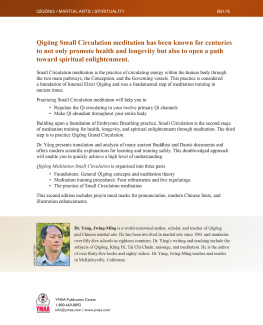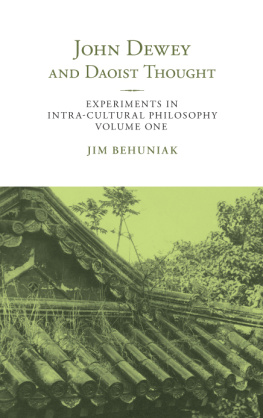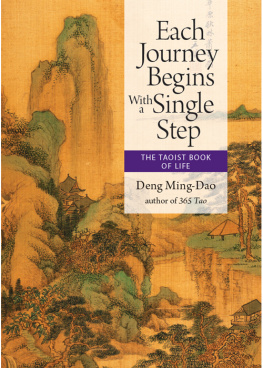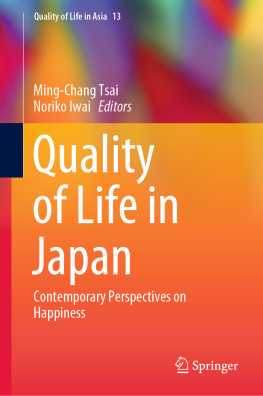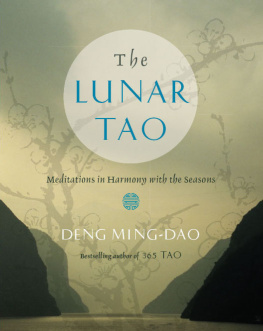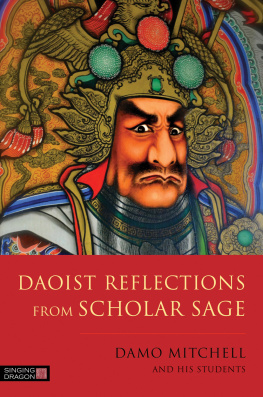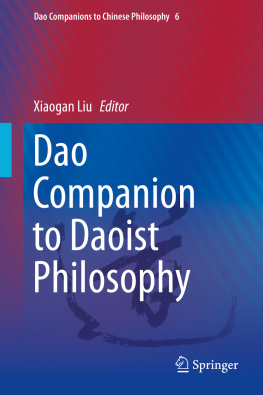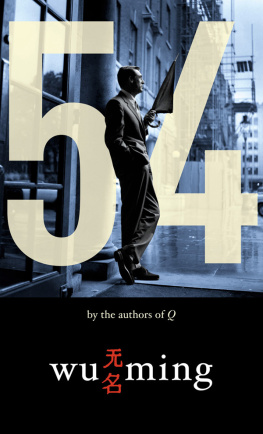
The Basic Chang Ming Cookbook Edited by Susan Gudjonsson for Lishi International First Published 1995 Second Edition 2013 Copyright Lishi International 1995 and 2013. All rights reserved. Please contact us at if you would like to copy any part of this work. Legal Notice The content of this book is provided for information and entertainment purposes only and does not constitute a legal contract between Lishi International and any person or entity. This book was put together for friends and fellow students and we are now making this resource available to a wider audience. These recipes are offered in good faith and we accept no liability for any illness, injury or harm that occurs as a result of following the suggestions outlined in this book.
You should always consult your physician before changing your diet. By following any of the recipes or advice in this book you are accepting full personal responsibility for your actions. 

Foreword to the Second Edition It gives me great pleasure to see this excellent collection of Chang Ming recipes made available to students of Lishi once again. The original printed version has served many of us well as a trusty source for a range of hearty, tasty and healthy meals, but unfortunately, there was only a limited print run and copies sold out a long time ago. Today, there is a new generation of Lishi students who want some help making Chang Ming a part of their training and with this electronic version you can benefit from these recipes on your laptop, tablet or phone. This second edition includes some minor amendments as well as a few additional recipes, which Im sure you will enjoy.
As Chee Soo said, There is no excuse for undermining the health of the human body, the most wondrous creation of the Supreme Spirit. Perfect in every detail, with working parts that replace themselves constantly, built-in thermostats to guard against the cold and changes in the atmosphere, an automatic cooling system that refreshes you in the extreme heat, and essential organs that work for twenty-four hours every day. Chee Soo The Tao of Long Life Chang Ming is a fundamental element of the Lishi Daoist Arts and I do hope that this small book helps you to enjoy eating the Chang Ming way. Find out more about Lishi by visiting our websites: www.lishi.org p.s. One day we would like to expand this book further so if you have a particular favourite Chang Ming recipe that you would like to contribute, please email
Contents
Before you start.....
Introduction
This little book came about because so many students of the Daoist Arts wanted to eat the Chang Ming way, but were unsure of how to go about it.
Of course, many people are familiar with Chee Soos definitive book The Tao of Long Life, which discusses the art of Chang Ming and offers advice on many of its aspects. This book is not a substitute for Chee Soos book, but is respectively offered as a small supplement to it. It is quite simply a book of basic recipes, put together with the aim of encouraging those people who wish to follow the Chang Ming way of eating. It is strongly recommended that it is used in conjunction with Chee Soos book, if possible. The book is made up of recipes from Chee Soo himself and from members of the International Daoist Society (now Lishi International). Thanks are due to all those who made contributions and special thanks go to my teacher, to Jack Leigh and to my husband, Ingo, for their encouragement.
Finally, I would like to express a deep debt of gratitude to Chee Soo without whom this book would not have been possible. Susan Gudjonsson, Editor
Chang Ming
Chee Soo wrote: The Chang Ming diet originates from experiments carried out on themselves by the early Daoist philosophers (5000 1000 BC). They were guided in these investigations by a group whose origins remain a mystery. They were known as Sons of Reflected Light. Many herbs, vegetables, meats and other foods were analysed to determine their effects on the human body and from this basis, guidelines were set out on the way of eating to avoid dis-ease or disharmony. They discovered that with good diet, you could eat yourself to health and long life, by maintaining the balance between two opposing principles within the body, known as Yin and Yang.
The emphasis is on eating natural foods that are locally grown in the same climate, so giving the best Yin/Yang balance for you. Processed foods lose their goodness in the refining process and should be avoided and the exclusion of artificial additives needs little explanation. Coffee, tobacco, chocolate, sweets and alcohol all contain stimulants and toxins which the body must eliminate, often wasting more energy than is gained from the food. We are what we eat the quality of our food determines the quality of our lives. If the bodys needs are neglected it is no surprise that colds, flu, cancer, heart attack or arthritis are the end product. This little book provides you with a few basic recipes to help you take the first step on the path to healthy eating.
In his book The Tao of Long Life Chee Soo sets out the basic principles of the Chang Ming way of eating as follows: + Eat only when hungry and not just out of habit. + Eat only natural foods. + Eat more grains and vegetables. + Chew all your food really well. + Dont overeat at any time. + Take deep breaths whenever you get the opportunity. + Take deep breaths whenever you get the opportunity.
Emphasis is placed on eating natural foods. Chee Soo explained that to be truly fit to eat, food should be organically grown, without the aid of pesticides or artificial fertilisers and should be completely unprocessed, so that it retains its natural nutritional constituents. Appendix 1 offers further guidance on those foods which are best avoided and those which may be eaten.
Weights and Measures
All recipes in this book give ingred ients in both metric (g, ml, etc.) and British Imperial (oz, pints, etc.) measures. Use either set of quantities, but not a mixture of both, in any one recipe. 1 teaspoon = 5 ml Teaspoon. 1 tablespoon = 15 ml Spoon. 1 tablespoon = 15 ml Spoon.
Occasionally a recipe simply indcicates proportions, by stating so many parts of one ingredient to so many parts of another. In this case, you should choose a measure, such as a teaspoon, tablespoon or cup to suit your purposes. Vegetables are medium-sized unless otherwise stated.
Ingredients & Utensils
Ingredients It is strongly recommended that you make every effort to obtain or ganic, locally grown ingredients wherever possible. Oil Regular reference is made to oil in the recipes. Use safflower oil, olive oil, sunflower oil or sesame oil, unless otherwise stated.
If possible use organically grown, cold pressed oils. Soya Sauce Many of the recipes specify soya sauce. Chee Soo recommended either Shoyu or Tamari, but be warned that people suffering from gluten allergy or hayfever should use Tamari, which is wheat free. Shoyu is made from wheat. Miso Always mix miso in a little cold water before adding it to other ingredients, which should have been allowed to cool for 5 minutes.
Proteins If you are a vegetarian, each main meal you eat should contain food from two of the three food categories of grains, pulses and nuts/seeds.
Proteins If you are a vegetarian, each main meal you eat should contain food from two of the three food categories of grains, pulses and nuts/seeds.
Next page

